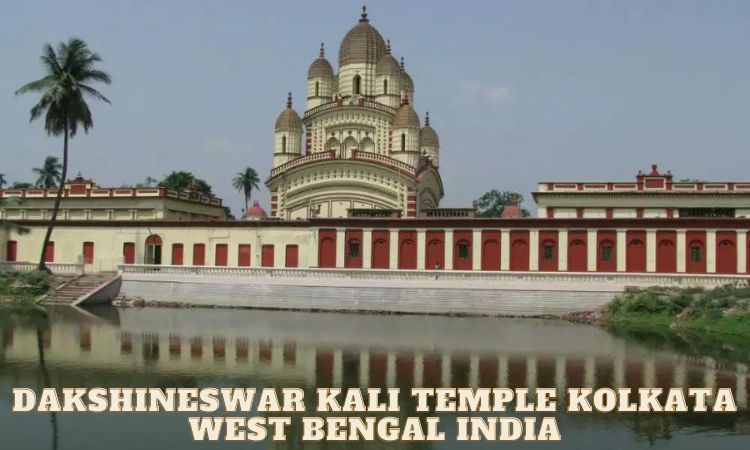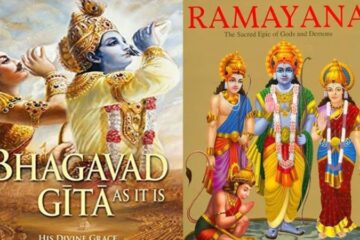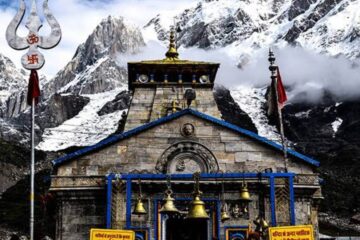
Standing majestically on the eastern banks of the Hooghly River in Kolkata, West Bengal, India, the Dakshineswar Kali Temple Kolkata West Bengal is a captivating landmark that transcends the realm of mere architecture. It is a vibrant tapestry woven with threads of history, devotion, spiritual awakening, and architectural brilliance. This 1500-word exploration delves into the temple’s captivating story, its architectural grandeur, its association with the revered saint Ramakrishna, and its enduring significance in the cultural landscape of India.
A Dream Realized: The Temple's Origins
The year was 1847. Rani Rashmoni, a wealthy philanthropist and devout follower of the goddess Kali, desired to embark on a pilgrimage to the holy city of Varanasi. However, destiny had a different plan. According to legend, Rani Rashmoni dreamt of the goddess Kali herself, who instructed her not to travel and instead build a temple on the banks of the Ganges (the Hooghly River being a distributary). Inspired by this vision, Rani Rashmoni dedicated herself to fulfilling the divine command.
The construction of the Dakshineswar Kali Temple began in 1843 and was completed in 1855. The sprawling temple complex sprawls over 20 acres and is a testament to Rani Rashmoni’s unwavering faith and generosity. The central attraction is the nine-spired (Navaratna) Kali Temple, a magnificent structure that embodies the essence of Bengali temple architecture. Built in red and cream sandstone, it stands tall at over 100 feet, its nine spires reaching for the heavens like celestial fingers.
Architectural Splendor: A Visual Feast
The Dakshineswar Kali Temple Kolkata West Bengal India is a visual delight, showcasing a perfect blend of architectural styles. The dominant influence is the Navaratna style, characterized by its nine spires. These spires are adorned with intricate carvings depicting deities, floral motifs, and geometric patterns, each detail speaking volumes about the dedication of the artisans.
The temple complex extends beyond the central Kali Temple. Within the compound lie twelve other temples dedicated to various deities, including Shiva, Radha-Krishna, and Ttara. Each of these temples possesses its own unique architectural charm, offering a glimpse into the diverse Hindu pantheon.
Adjoining the Kali Temple is the Natmandir, a spacious hall built in the Bengali chala style. This hall served as a performance space for devotional music and dance, further enriching the temple’s spiritual atmosphere. The entire complex is adorned with intricate sculptures, terracotta work, and sprawling gardens, adding to its visual grandeur.
A Spiritual Haven: The Influence of Ramakrishna
The Dakshineswar Kali Temple’s significance extends beyond its architectural beauty. It is deeply intertwined with the life and teachings of Ramakrishna Paramahamsa, one of India’s most revered saints. Ramakrishna served as a priest at the temple for 30 years, starting in 1856. He spent countless hours meditating before the image of Kali, experiencing profound spiritual visions and revelations. The temple became a crucible for his spiritual growth, fostering his devotion to Kali and his exploration of various spiritual paths.
Ramakrishna’s teachings transcended religious boundaries, emphasizing the universality of God and the importance of realizing the divine within oneself. He attracted a diverse group of disciples, including Swami Vivekananda, who went on to spread his message of Vedanta philosophy across the globe.
The temple complex houses the Panchavati, a cluster of five banyan trees under which Ramakrishna spent a significant part of his life in meditation and spiritual discourses. This sacred spot continues to draw devotees seeking inspiration from the saint’s presence. The temple also houses the residence of Ramakrishna and his wife Sarada Devi, now transformed into a museum showcasing their lives and spiritual legacies.
Daily Life at the Dakshineswar Kali Temple
The Dakshineswar Kali Temple is a living place of worship, teeming with devotees throughout the day. The temple follows a strict schedule of rituals and pujas (worship ceremonies) dedicated to Kali. The mornings begin with the Mangala Aarti, a ceremonial awakening of the goddess. Throughout the day, various pujas are performed, each with its own specific purpose and significance.
Devotees visit the temple to offer prayers, participate in the pujas, and seek blessings from the goddess Kali. The temple also attracts a significant number of tourists who marvel at its architectural beauty and historical significance. The atmosphere is a captivating blend of devotion, peace, and cultural vibrancy.
Festivals and Celebrations
The Dakshineswar Kali Temple Kolkata West Bengal India comes alive during festivals, particularly during Kali Puja (worship of Kali), which is celebrated with immense fervor in Kolkata and throughout India. The temple is decorated with vibrant lights and flowers, and special pujas are held throughout the day.
Beyond Kali Puja
While Kali Puja is the most prominent festival celebrated at the Dakshineswar Kali Temple, other festivals throughout the year add to its vibrant spirit. These include:
- Janmashtami: Celebrating the birth of Lord Krishna, the temple witnesses joyous festivities with devotional music and special offerings.
- Rathayatra: This chariot festival, dedicated to Lord Jagannath, his brother Balabhadra, and sister Subhadra, sees beautifully decorated chariots processional around the temple complex.
- Durga Puja: The ten-day festival honoring Goddess Durga draws large crowds, with the temple adorned with captivating decorations.
Social and Cultural Significance
The Dakshineswar Kali Temple in Kolkata West Bengal holds immense social and cultural significance. It stands as a testament to India’s rich heritage of temple architecture and the enduring devotion to the goddess Kali. The temple’s association with Ramakrishna Paramahamsa has made it a pilgrimage site for followers of Vedanta philosophy and a symbol of religious tolerance and spiritual exploration.
Beyond Religious Boundaries
The temple transcends the boundaries of religion. It serves as a community center where people from all walks of life come together to seek solace, celebrate festivals, and witness the beauty of Hindu rituals. The temple provides a platform for cultural exchange, fostering understanding and appreciation for the diverse religious practices of India.
Challenges and Conservation Efforts
The Dakshineswar Kali Temple Kolkata, despite its grandeur, faces challenges. The constant influx of devotees and environmental factors pose a threat to the temple’s structural integrity. However, dedicated efforts are underway to ensure its preservation. The temple authorities, working with heritage organizations, undertake regular restoration and maintenance work to safeguard the temple’s architectural marvels for generations to come.
Visiting the Dakshineswar Kali Temple
The Dakshineswar Kali Temple Kolkata is a must-visit for anyone traveling to Kolkata, West Bengal, India. The temple is easily accessible by local trains, buses, and taxis.
Here’s what you can expect during your visit:
- Opening hours: The temple follows a specific schedule, typically open from 6:00 AM to 12:30 PM and then again from 3:30 PM to 7:30 PM. It is recommended to check the official website or call the temple for updated timings.
- Dress code: Although there’s no strict dress code, modest clothing is recommended. Devotees are expected to cover their heads and remove shoes before entering the sanctum sanctorum (innermost chamber) dedicated to Kali.
- Offerings: Devotees can offer flowers, sweets, and fruits to the goddess. The temple authorities also offer paid puja services for those who wish to participate in specific rituals.
- Respecting the sanctity: Photography within the sanctum sanctorum is often not permitted. It’s important to maintain silence and respect the reverence of the space.
A Lasting Legacy
The Dakshineswar Kali Temple Kolkata stands as a testament to faith, devotion, and the enduring spirit of Indian culture. It is a place of spiritual awakening, architectural marvel, and vibrant community life. Visiting this iconic temple is an enriching experience that lingers long after you leave its sacred grounds.
FAQs on Dakshineswar Kali Temple, Kolkata, West Bengal, India
1. What is the Dakshineswar Kali Temple?
Ans. The Dakshineswar Kali Temple is a renowned Hindu temple dedicated to the goddess Kali, located in Kolkata, West Bengal, India. Built in 1855, it’s known for its stunning architecture, association with Ramakrishna Paramahamsa, and being a vibrant center of worship.
2. Who built the Dakshineswar Kali Temple?
Ans. Rani Rashmoni, a philanthropist and ardent devotee of Kali, commissioned the temple’s construction.
3. What is the architectural style of the temple?
Ans. The main temple is built in the Navaratna style, characterized by its nine spires and intricate carvings. The complex also features influences of Bengali chala and other regional styles.
4. Why is Ramakrishna Paramahamsa associated with the temple?
Ans. Ramakrishna served as a priest at the temple for over 30 years. The temple environment played a significant role in his spiritual growth and teachings.
5. What are the daily rituals at the temple?
Ans. The temple follows a strict schedule of pujas (worship ceremonies) dedicated to Kali, including Mangala Aarti (morning awakening) and other pujas throughout the day.
6. What are some major festivals celebrated at the temple?
Ans. Kali Puja is the most prominent festival, but others include Janmashtami (Krishna’s birthday), Rathayatra (chariot festival), and Durga Puja.
7. Is there a dress code for visiting the temple?
Ans. There’s no strict code, but modest clothing covering shoulders and knees is recommended. Shoes must be removed before entering the sanctum sanctorum.
8. Can I take photographs inside the temple?
Ans. Photography within the sanctum sanctorum is often not permitted. It’s best to check with the temple authorities.
9. What are the timings for visiting the temple?
Ans. Timings can vary. It’s generally open from 6:00 AM to 12:30 PM and 3:30 PM to 7:30 PM. Check the official website or call for current timings.
10. How can I reach the Dakshineswar Kali Temple?
Ans. The temple is accessible by local trains, buses, and taxis from Kolkata.


